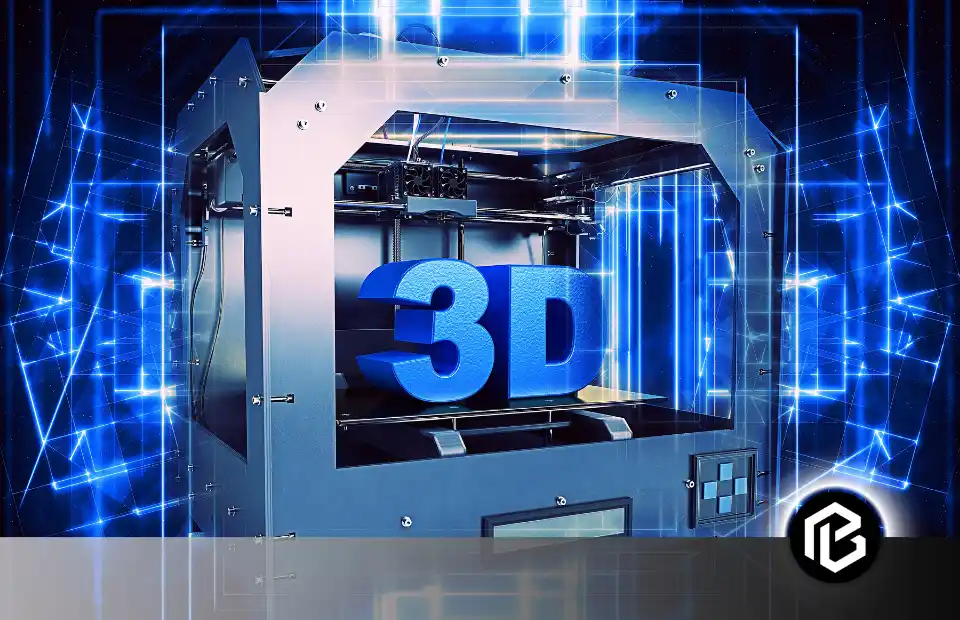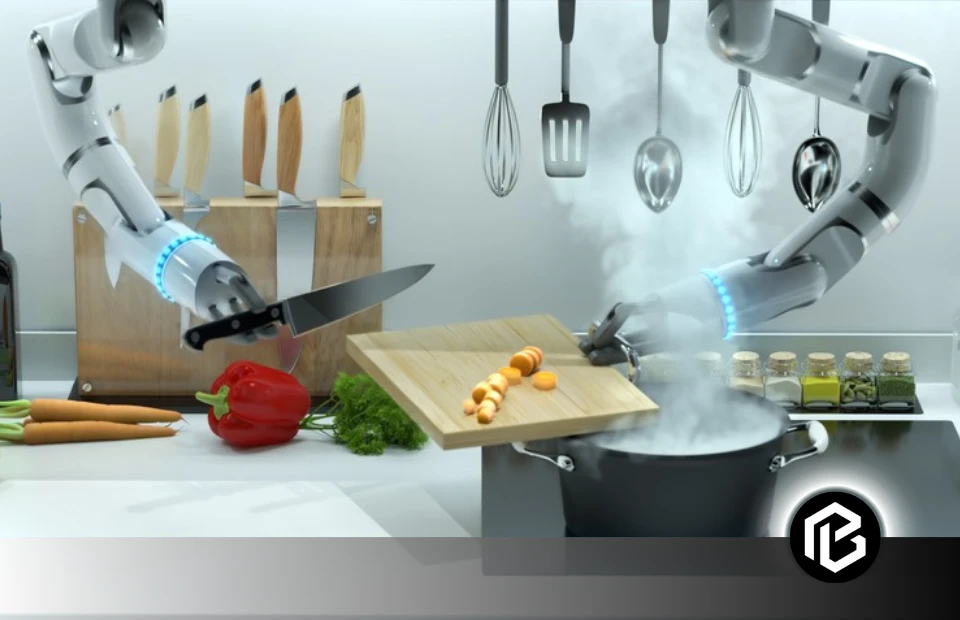The Impact of 3D printing on Manufacturing is shaking up the whole world and the stuff we use daily. It’s been a huge success and has caught companies’ attention because it’s added a new layer of complexity to how we make stuff.
3D printing in manufacturing can reduce the time needed to produce parts, bypassing a time-consuming and costly tooling production step. 3D printing in manufacturing has changed how designers design, reduced waste, and cut production time to a millionth of what it was before. 3D printing in manufacturing is cost-effective technology for producing parts with complex geometries.
So, what are we talking about in this essay? How has 3D printing changed the world? How is it changing a bunch of different industries? And how can it change manufacturing even more in the future?
- 3D Printing
- Freedom of Design with 3D Printing
- 3D Printing Maximize Productivity
- 3D Printing Increased Sustainability
- 3D Printing in Health Care
- Enhance Mechanical Progress
- 3D Printing in Aerospace
- Boosting the Capacity of Local Manufacturers
- Resilient Supply Chains
- Knowledge and Abilities
- Freedom of Expression in the Arts
- Problems with Intellectual Property and Government Regulations in 3D Printing
- Circular Economy and Materials
- Space Frontier Exploration
- Innovative Cooperation
- Impending Difficulties
- Future With 3D Printing
- Conclusion
- Frequently Asked Questions on The Impact of 3D Printing on Manufacturing
3D Printing

Additive manufacturing is a process where you take a digital model, layer on top of it, and turn it into something physical. It’s kind of like 3D printing or subtractive manufacturing. The goal is to make something with complex geometry and lots of details. So, if you have an idea and want to get it done, then additive manufacturing is the way to go.
Freedom of Design with 3D Printing
3D printing is one of the coolest things about it because it gives you a lot of freedom to design. With typical manufacturing, you have to use special tools like mold and die to make things, which means you can’t make as many shapes or sizes as you’d like. But 3D printing gives you the freedom to make things that engineers and designers used to think were too complicated or costly to make but now are doable. This more flexibility to design frees you up to be creative and personal.
3D Printing Maximize Productivity
3D printing is way ahead of the game regarding design and manufacturing efficiency. With traditional manufacturing, many people and processes go into making a product. But with 3D printing, you don’t have to worry about that. You can print complete items on one printer, which means assembly time is shorter, and you can get more done in less time. This means you can meet customer needs faster.
3D Printing Increased Sustainability
There’s a lot of talk about how traditional manufacturing methods can be bad for the environment. Raw materials are often wasted cutting, drilling, and milling, so it’s no surprise that there’s a lot of interest in 3D printing. Plus, 3D printing has an additive process, so it’s likely a good option in the future. Construction is also a great option since it uses less material waste. This means manufacturers can save money and fit in with their other goals.
3D Printing in Health Care
3D printing is set to revolutionize the medical industry. Surgeons will now be able to create implants, prosthetics, and medical devices that are tailored to each patient. This means they’ll be able to get ready for even the toughest surgeries with ease. It will open up a whole new world of healthcare where people’s needs are cared for.
Enhance Mechanical Progress
The car industry is a shining example of cutting-edge technology, and 3D printing is helping them stay ahead of the curve. With its help, they can prototype, test, and fine-tune their cars. Plus, they can make lightweight and complex parts that boost fuel economy and performance.
3D Printing in Aerospace

When it comes to weight, the aerospace industry is the one that stands out the most. When it comes to making parts for planes and spacecraft, it’s all about finding the right balance between weight and strength. 3D printing has made it possible to create lightweight and strong materials, like titanium alloys or advanced polymers. These features help the aerospace industry save fuel and meet safety standards.
Boosting the Capacity of Local Manufacturers
In the manufacturing industry, 3D printing helps to level the playing field by making it easier for startups and small businesses to get started. , new manufacturers had to pay a lot for the initial setup and tooling to get started. But with 3D printing, you don’t have to worry about that. You can bring your ideas to life without spending much money on moulids and tools. That means more products on the market and more chances for people to get creative.
Resilient Supply Chains

When something unexpected happens, like a natural disaster or a pandemic, it can disrupt the supply chain worldwide. With 3D printing, the solution is to be able to make parts on demand. Instead of ordering them from somewhere else, you can make them in-house. That way, you can keep up with market changes and ensure you have the supplies and parts you need when needed. That’s especially important in times of crisis when you must ensure you have everything you need.
Knowledge and Abilities
3D printing is not only changing industries, but it’s also changing the future of work. Schools are now offering classes to teach kids how to use technology from an early age. This hands-on training gives them the skills to be creative, design, and solve problems. Education is key to creating a skilled workforce to meet the ever-growing demand for 3D printers.
Freedom of Expression in the Arts
3D printing has a huge impact on how we express ourselves. Creative people are using this new technology to make their ideas come to life. Things that used to be only possible with a lot of hard work, like sculptures, jewellery, and other fancy decorations, can now be made with 3D printing. When technology and art come together, it opens up new possibilities and pushes the boundaries of what’s possible.
Problems with Intellectual Property and Government Regulations in 3D Printing
There’s a lot to love about 3D printing and a lot to worry about regarding intellectual property (IP). As more people copy designs and mass produce them, we see an increase in IP theft. It’s an uphill battle to give people the freedom to be creative while securing intellectual property. As it becomes more popular, regulators must change the laws and regulations around 3D printers to ensure they’re safe, high-quality, and ethical.
Circular Economy and Materials
Sustainability is at the forefront of 3D printing right now, and it’s greatly impacting how we make stuff. We’re recycling many more materials and using more bio-based materials instead of new ones. This means we don’t have to use as many new materials to make things. Plus, recycling and reusing stuff can help us reduce our environmental impact regarding manufacturing. Buyers are looking for more sustainable products and production methods, so we’re starting to see a shift towards more sustainable resources.
Space Frontier Exploration
With 3D printing, it’s no longer a pipe dream to have a “final frontier“. It has revolutionized space exploration because keeping weight down for short trips is important. Using only what we have, astronauts can make everything from tools to spare parts to whole habitats. This revolution changes how we plan to keep a human presence in space without relying on supplies from Earth.
Innovative Cooperation
Thanks to the open-source movement, 3D printing has come a long way. There are now many online communities and resources where amateurs and pros can chat, exchange design ideas, fix problems, and share best practices. This community helps grow it, which helps create new ideas and solve problems in many industries.
Impending Difficulties
There are pros and cons to 3D printing. Materials need to be strong, heat-resistant, and biocompatible. Researchers are trying to create new materials that work in various applications. As it becomes more popular in companies, there’s also a worry about how it will work in the future. Manufacturers want to ensure they get the best out of their 3D printers without sacrificing quality.
Future With 3D Printing

As we move into the next manufacturing stage, 3D printing is rising. Adding AI and robots to it can help increase production capacity. Think of smart algorithms that can optimize designs in real-time and autonomous 3D printers that can build intricate structures and Household things.
Conclusion
3D printing is more than a fad. It’s a game-changer that means creativity will no longer be the only factor driving the manufacturing process. It has become an integral part of manufacturing because of its ability to make design more flexible and Increase production efficiency. Technology has the potential to transform industries. It improves healthcare and helps us all be more creative and sustainable as it grows and faces new challenges. We’re still in the early days of 3D printing but are already seeing remarkable results.
Frequently Asked Questions on The Impact of 3D Printing on Manufacturing
Can 3D printing be used for mass production?
While initially used for prototyping and low-volume production, advancements in technology are enabling 3D printing to be increasingly adopted for mass production, particularly for specialized components.
How does 3D printing impact prototyping and product development?
3D printing enables rapid prototyping and iteration, allowing designers and engineers to test and refine designs quickly, leading to faster time-to-market for new products.
What advantages does 3D printing offer in supply chain management?
3D printing enables localized manufacturing, minimizing the need for complex supply chains and reducing transportation costs and environmental impact.
What are the limitations of 3D printing in manufacturing?
Despite its advantages, 3D printing may still face limitations in terms of material selection, production speed, and scalability for certain applications, necessitating a balanced approach with traditional manufacturing methods.





